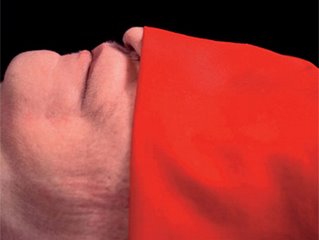ANDRES SERRANO

the PAC of Milan is celebrating the creative genius of a great interpreter of our times, Andres Serrano, with a dual appointment: the exhibition Salt on the wound, curated by Oliva María Rubio, in co-operation with La Fábrica of Madrid, a selection of some of his most significant photographs taken in the last twenty years and the exhibition, The Morgue, curated by Alessandro Riva in cooperation with Tomaso Renoldi Bracco, ten works never shown before and taken from a controversial series of photographs of 1992 with the same name. These macabre and shocking images, long kept hidden by wish of the artist himself, are now being displayed exclusively, for the very first time, in Milan. A cursed and highly provocative artist, this is the image that Serrano has always created of himself. In reality, on closer analysis, his works appear complex and rich in subtlety. The rebel genius par excellence, Serrano expresses his criticism in the subtle dichotomy that underlies his photographic images, unblemished and flawless, terrifying and transgressive; he refuses imitations of the contemporary world and illustrates its inner disturbances and manias. The photographs of Andres Serrano (New York,1950) have never ceased to depict the most controversial and polemical subjects of the convulsive world in which we live since he first started his work at the beginning of the nineteen eighties. Religion, fanaticism, the human body, xenophobia, illness and death have all been subjected to his meticulous attention in series like Bodily Fluids, The Morgue, Nomads, Ku Klux Klan, The Church, A History of Sex etc. What seems a provocation manifests as a vocation: that of addressing subjects and issues which concern us as human being by means of images which are also distinguished for their beauty. Beauty is an essential component of Serrano’s work. This artist uses it to intensify the tension that seduces his spectators with the forbidden fascination of taboo subjects. Serrano has in fact confessed that his objective as an artist has always been that of beauty: “I believe that it is necessary to seek beauty even in the least conventional places or in the candidates you would least suspect. If I don’t encounter beauty I’m not capable of taking any photos”. The effectiveness of his images is similar to that of advertising mechanisms, the declared use of Caravaggesque lighting, the bright colours, the precision of the titles and, above all, the use of concise but always eloquent language. Serrano has no specific interest in the photographic process; he is rather a formalist who identifies strongly with the traditions and with the great masters of baroque painting, defining himself as a religious artist of the past with contemporary ideas. His compositions are rigorous and allegorical symbols appear in each of his series of photographs. He constructs elaborate tableaux which adopt the quality and the virtuoso mannerism of the great seventeenth century painters. Serrano never censors his photos and never indulges in compromise. By moving on the thin line that separates the sacred from the profane, the moral from the immoral, the licit from the illicit, Serrano’s works have avoided the limitations of mere decorativism. The artist goes beyond the confines of what is permitted, in both the personal and the social sphere, to entice and surprise his viewers, putting images before them, which on first impulse would make them close their eyes if they weren’t presented in an attractive and picturesque fashion.

0 Comments:
Post a Comment
<< Home